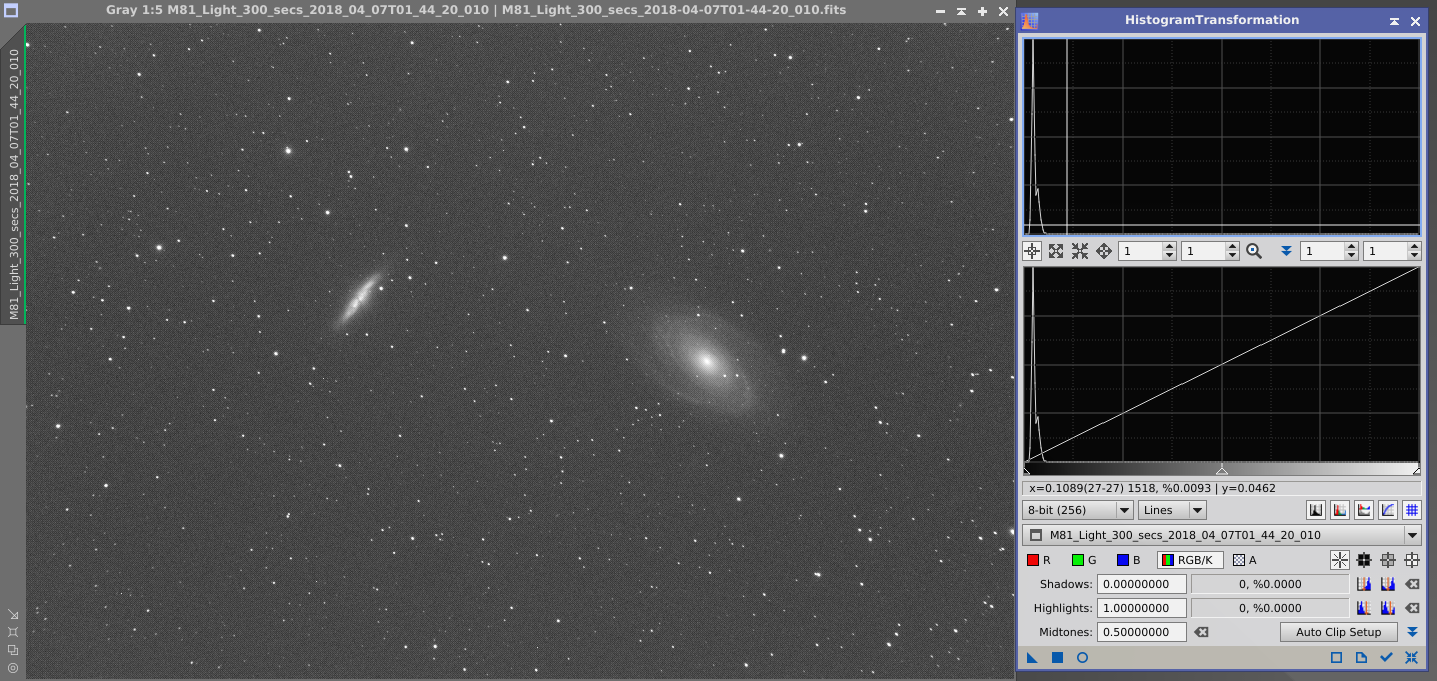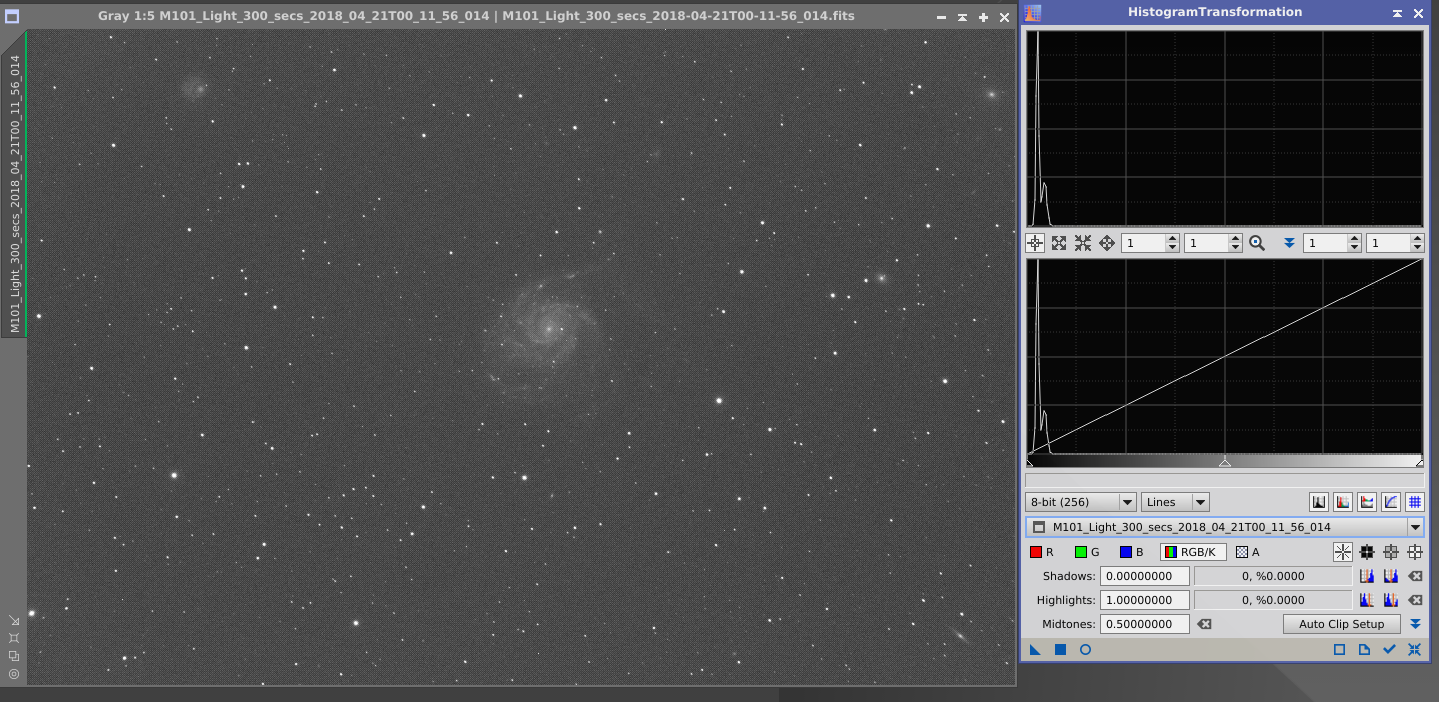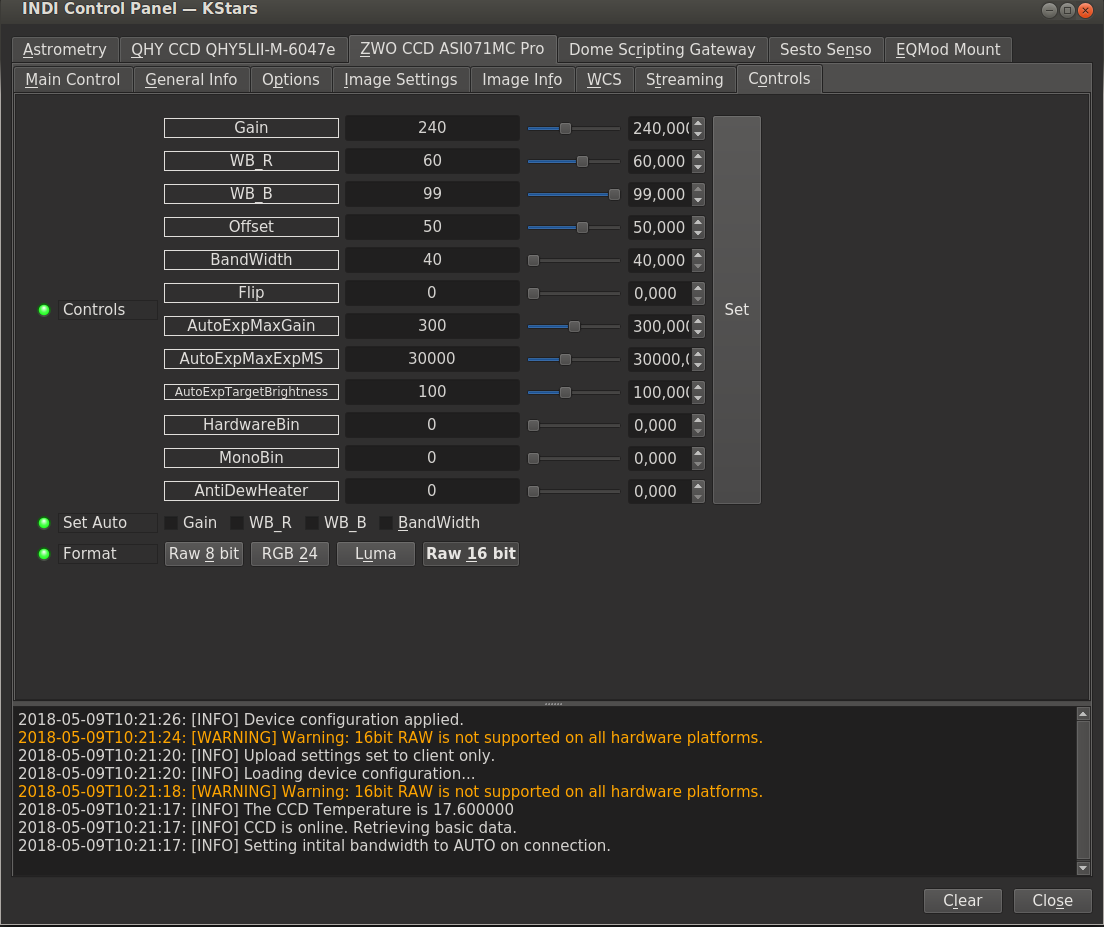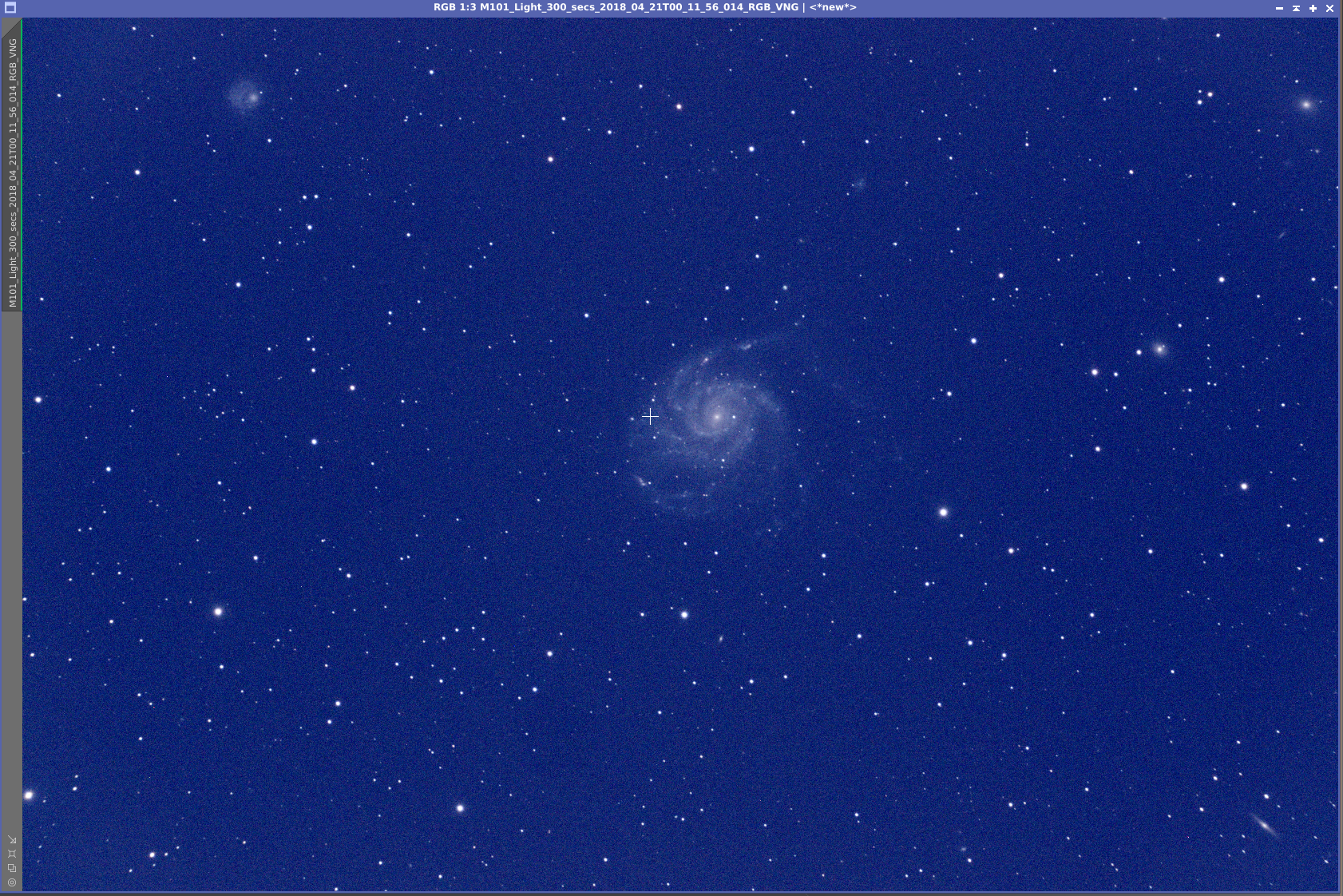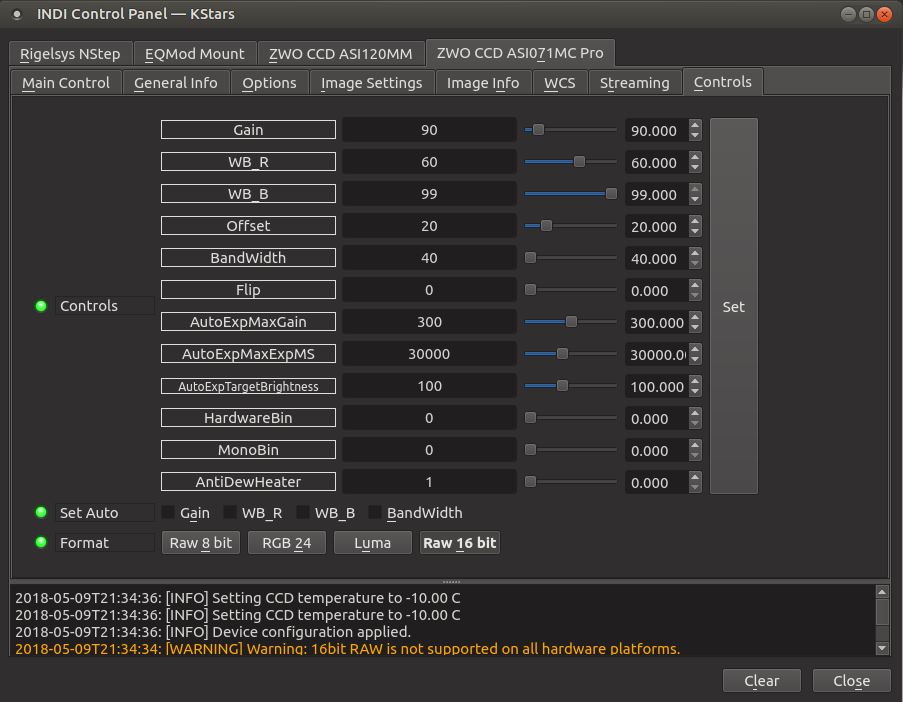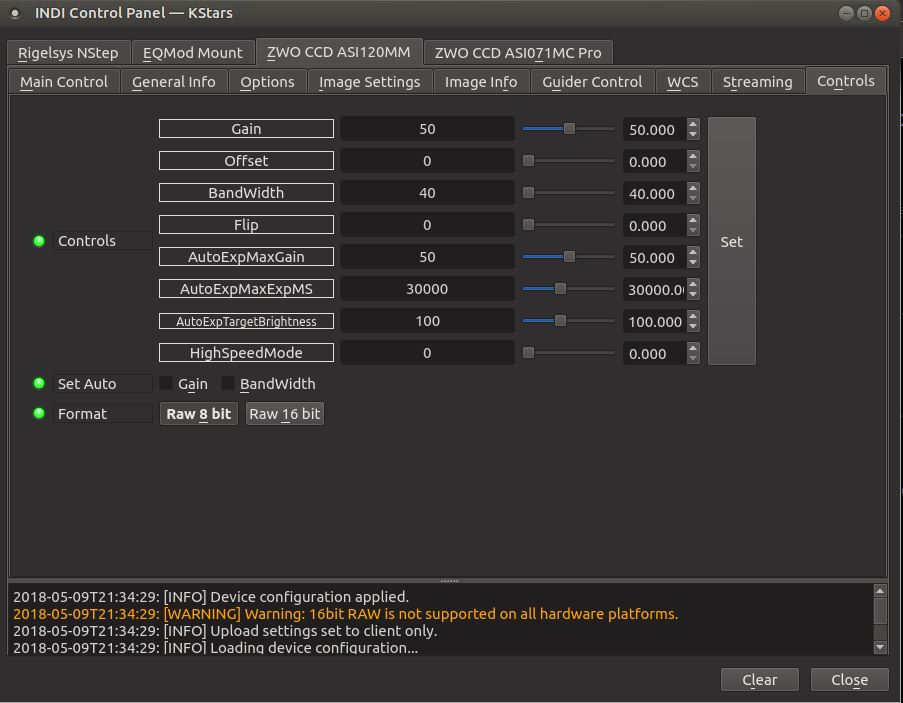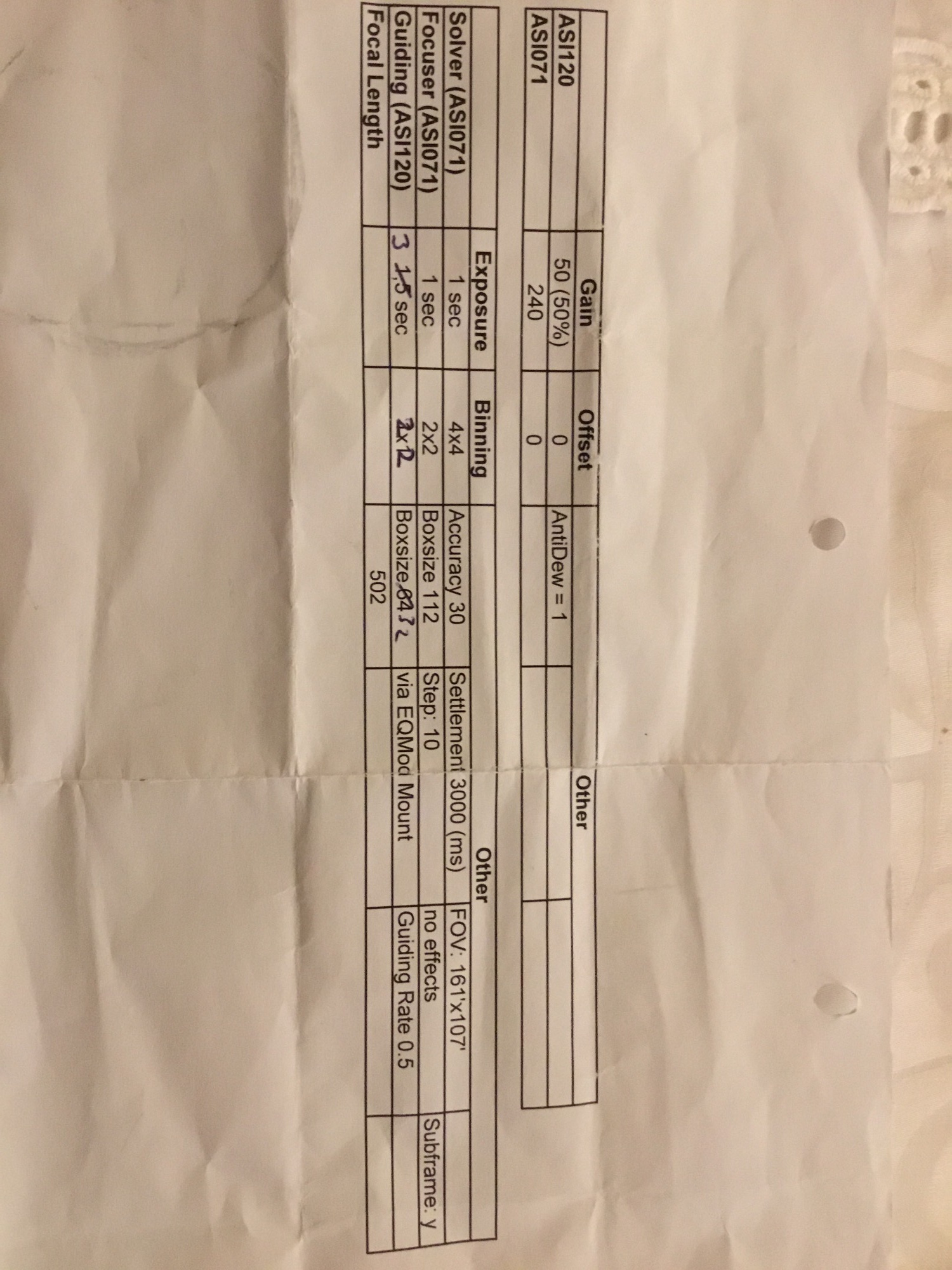INDI Library v2.0.7 is Released (01 Apr 2024)
Bi-monthly release with minor bug fixes and improvements
ASI Camera - Gain/Offset/x-Bit
Replied by Helge on topic ASI Camera - Gain/Offset/x-Bit
When you say, fitsviewer auto‘s everything, do you mean the autostretch function is enabled? In my case it is disabled.
Could you kindly share also a screenshot with the „control“ settings of the asi drivers? Just that I can cross-check if I messed up accidentally any other parameter.
Please Log in or Create an account to join the conversation.
- Ferrante Enriques
-
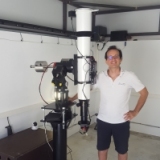
- Offline
- Elite Member
-

- Posts: 249
- Thank you received: 62
Replied by Ferrante Enriques on topic ASI Camera - Gain/Offset/x-Bit
- My setup is a 115/800 f/a 6.95 apo refractor on a HEQ5 mount.
- Added a field flattener and LP filter. No focal reducer.
- Cooling always at -10. It's a low noise camera, there's no real gain to cool it further (as to specs on ASI website, astronomy-imaging-camera.com/products/as...ameras/asi071mc-pro/).
- Tried unity gain at first, then settled on 240 gain with 300s exposures . It doesn't seem to saturate too much (see attachments for M101, M81. deepsky objects that you can easily compare with yours). Probably would change for M31 or M42.
- Ignored offset as another owner on Cloudynights says it's now fixed at 50. Not really sure about that.
- Beside gain I left all other controls to their default values.
Overall I'm satisfied with these settings but please give me your opinion, there's always a benefit in trying different approaches.
Ferrante
attachments:
- ASI071 'Control' tab from Ekos/INDI
- M81 single raw 300s exp @gain 240 + histogram
- M101 single raw 300s exp @gain 240 + histogram
- M101 single debayered 300s exp @gain 240
Please Log in or Create an account to join the conversation.
Replied by Greg on topic ASI Camera - Gain/Offset/x-Bit
One is to place the sky background peak at 2.2% of the full scale on a linear histogram like in fits viewer.
The second is to set your camera ISO/gain such that you have 11 stops/64 dB of SNR.
With regards to offset, I don’t see this as an important factor as any image will only have usable content above the background level, which is to be set at 2.2% as mentioned. So 0 offset is probably fine.
Please Log in or Create an account to join the conversation.
Replied by Andreas on topic ASI Camera - Gain/Offset/x-Bit
The higher gain came, the higher the offset was to be set not to clip anything on the left side. The resulting offset/gain table was not linear in this case. I think in principal this should work the same way with any cmos cam.
These offset values then should be applied to all light and calibration frames of course.
What I don't understand is: why do manufacturers not normalize their setting to 0-100%, so every cam has different max gain settings now?
Andreas
Please Log in or Create an account to join the conversation.
Replied by Andreas on topic ASI Camera - Gain/Offset/x-Bit
I think this is a misconception. Calibration frames like bias or darks might be clipped on the left side of the histogram with offset 0. This could introduce artifacts during calibration.
jonrista.com/the-astrophotographers-guid...oise-and-histograms/
scroll down to "Anatomy of Signals in Histograms". The offset value prevents the "separation" of beeing negative.
Andreas
Please Log in or Create an account to join the conversation.
Replied by Greg on topic ASI Camera - Gain/Offset/x-Bit
Yes, you could be right. I forgot to mentioned that as far as offset goes, I haven't studied it.
Please Log in or Create an account to join the conversation.
- Alan Mason
-

- Offline
- Junior Member
-

- Posts: 20
- Thank you received: 9
Replied by Alan Mason on topic ASI Camera - Gain/Offset/x-Bit
Helge,
Yes, I set kstars fitsviewer settings to include autostretch and occasionally debayer as was in that image. I included my settings page for both cameras. I hope you have better luck with the camera.
WHERE is everyone getting this gain of 50 for HDR on the asi cooled cmos cameras? I keep seeing post with that value included but it's not what Sam at ZWO states as Highest Dynamic Range (widest range of signal that the sensor can record) Cooled ASI Camera Settings
Please Log in or Create an account to join the conversation.
Replied by Greg on topic ASI Camera - Gain/Offset/x-Bit
It’s not camera dynamic range you are trying to achieve. It’s star SNR. If you have high gain the bright stars with high SNR will be saturated. These are all trade offs of course so it’s also related to exposure time. Because you probably have to have longer exposures for guiding to smooth things out. You’ll have to turn down the gain. You can corroborate what I’m saying with PHD2 “best practices”
Please Log in or Create an account to join the conversation.
- Alan Mason
-

- Offline
- Junior Member
-

- Posts: 20
- Thank you received: 9
Replied by Alan Mason on topic ASI Camera - Gain/Offset/x-Bit
Gain does not make your camera more sensitive. It boosts the noise as well as the signal and does not help the signal to noise ratio (SNR) in and of itself. Gain trades off dynamic range and quantization error.
It is camera dynamic range I am trying to achieve when I want the faintest signal and also stars with strong signal to be recorded. I am referring to taking images of DSO's with my cooled ASI071mc-pro.
With your comments above, it looks like you are referring to guiding that has exposures less than 5s where noise is not as important to manage as it is in a main imaging camera. I want the sensor well on my main camera to fill up slowly with the stronger signals to give the fainter signals time to register on the histogram without oversampling. GAIN AND OFFSET EXPLAINED ....the statement about gain above is in bold on this article.
Please Log in or Create an account to join the conversation.
Replied by Greg on topic ASI Camera - Gain/Offset/x-Bit
Please Log in or Create an account to join the conversation.
Replied by Matt on topic ASI Camera - Gain/Offset/x-Bit
Please Log in or Create an account to join the conversation.
Replied by Helge on topic ASI Camera - Gain/Offset/x-Bit
To my knowledge, there is no guide - but in case it is useful, this is, what I have been putting down some time ago. I could not find the electronic version, just a sheet of paper...sorry, it does not look very nice.
Best, Helge
Please Log in or Create an account to join the conversation.

